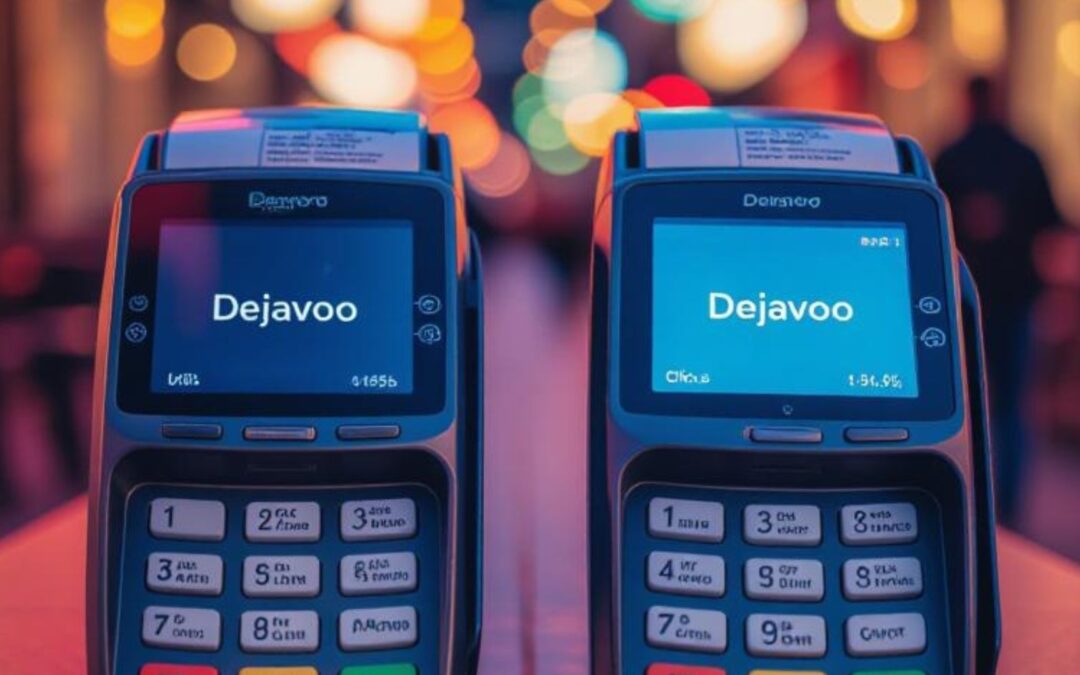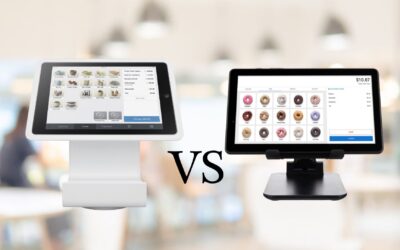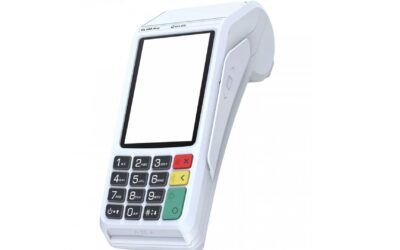
Dejavoo P1 vs P3 | Choosing the Right Android Payment Terminal for Your Business
Written by: Zac Rogers
Empower your business with Dejavoo’s trusted payment technology — explore Dejavoo P1 vs P3 terminals at Paywavez today, and take your transactions to the next level.
Reliable payment processing is the backbone of customer satisfaction and business efficiency. Whether you’re managing a busy countertop checkout or accepting payments on the go, you need a terminal that’s fast, secure, and built to last.
That’s where Dejavoo’s P-Series Android terminals come in — particularly the Dejavoo P1 Secure Android Countertop and Dejavoo P3 Secure Android Wireless models. Both are trusted by thousands of merchants across industries for their stability, security, and performance. But while they share Dejavoo’s hallmark quality, their designs serve very different business needs.
This in-depth comparison will help you understand how the P1 and P3 differ in features, performance, and use cases — so you can choose the one that best fits your operation.
Overview: Two Terminals, One Reliable Ecosystem
Dejavoo’s Android-based payment terminals have become a favorite among small and medium-sized merchants, thanks to their simple interface, multi-app support, and flexible connectivity.
The Dejavoo P1 is a stationary countertop terminal built for businesses that need a fixed, dependable payment point — such as retail stores, restaurants, and front-desk operations.
The Dejavoo P3, on the other hand, is a wireless, portable terminal designed for mobility — perfect for delivery services, curbside pickups, trade shows, or mobile professionals.
Both devices run Android OS, support all major payment methods (chip, magstripe, NFC, and digital wallets like Apple Pay and Google Pay), and integrate seamlessly with iPOSpays, SPIn, and iPOSpays Gateway software solutions.
Design and Build: Fixed Power vs. Mobile Freedom
Dejavoo P1: Built Like a Workhorse
The P1’s design emphasizes stability and endurance. With a sturdy frame weighing about 408 grams, it’s meant to stay put on the countertop and handle thousands of transactions daily.
The 5-inch HD touchscreen delivers crisp visuals, while the 15 alphanumeric keys and side control buttons make navigation easy for cashiers and customers alike. The internal 2” thermal printer prints receipts quickly and clearly at 70mm/s, and its wide 58mm paper roll supports continuous, high-volume printing.
Dejavoo P3: Compact and Portable
In contrast, the P3’s design philosophy is all about mobility without compromise. Despite having nearly identical dimensions to the P1, its removable battery and cellular network support (4G/3G/2G) make it a go-anywhere terminal.
It’s built for durability, with rugged housing to withstand outdoor and mobile use. The 5MP rear camera allows for scanning barcodes or verifying IDs — a handy tool for mobile merchants who need to streamline their workflow.
Verdict:
If your business is stationary, the P1’s solid and ergonomic build is ideal. For mobile payments and on-the-move transactions, the P3’s portable form and integrated battery power make it the superior choice.
Operating System and Performance
Dejavoo P1: Android 7.1
The P1 runs on Android 7.1, powered by an Octa-core 1.5GHz processor with 1GB RAM and 16GB ROM. This combination provides ample speed for stable payment processing and supports Dejavoo’s multi-application environment.
While it’s not the newest Android version, it’s highly stable, lightweight, and optimized for secure payment functions — perfect for businesses that value reliability over novelty.
Dejavoo P3: Android 11.0
The P3, running Android 11, offers a more modern experience. It features a Quad-core 1.5GHz Cortex A53 processor and up to 2GB of RAM, depending on the configuration. Android 11 ensures better app compatibility, enhanced privacy controls, and improved security patches — an important advantage for merchants concerned with compliance and future-proofing.
Verdict:
While both devices perform efficiently for payment applications, the P3 has a clear edge in software longevity and system responsiveness, thanks to its newer OS and optional higher memory configuration.
Connectivity and Communication
Dejavoo P1: Wired Reliability
Connectivity is where the P1 truly shines for fixed locations. It supports:
Ethernet (RJ45) for stable wired connections
WiFi 2.4GHz and 5GHz for flexible networking
Bluetooth 2.1/3.0/4.2 for pairing with peripherals like barcode scanners or printers
This combination ensures maximum uptime and consistent transaction speed — crucial for busy checkout counters where network interruptions aren’t acceptable.
Dejavoo P3: Wireless Versatility
The P3 supports multiple connection options for mobile scenarios:
WiFi 2.4GHz/5GHz
Bluetooth 4.2 with BLE support
Cellular network connectivity (4G/3G/2G) via SIM card
Whether you’re processing payments in a food truck or at a trade fair, the P3 ensures you stay connected and operational.
Verdict:
The P1 is optimized for stable, wired environments, while the P3 is designed for wireless independence. Your choice depends entirely on where and how your transactions occur.
Power and Battery Life
Dejavoo P1: Always On, Always Ready
Being a countertop device, the P1 runs primarily on AC power and includes a 7.2V/2600mAh lithium polymer battery for backup. The power adapter supports AC100-240V input, making it globally compatible for various business setups.
This ensures uninterrupted operation — even during brief power fluctuations — without the need to worry about recharging.
Dejavoo P3: True Portability with a Removable Battery
The P3 takes mobility seriously, with a removable lithium polymer battery (7.4V, 2600mAh standard or optional 3350mAh). This gives you hours of continuous operation on the go, and the ability to swap batteries ensures you can keep working through long shifts.
Verdict:
For businesses in fixed premises, P1’s always-plugged setup is perfect. But if you operate in the field or at multiple locations, the P3’s removable battery and autonomy make it indispensable.
Payment Acceptance and Security
Both the P1 and P3 deliver comprehensive payment acceptance, covering:
EMV chip cards
Magstripe cards
Contactless/NFC payments
Digital wallets (Apple Pay, Google Pay, Samsung Pay)
MIFARE and QPBOC compatibility
They adhere to global security standards, including:
ANSI X9.8 / ISO 9564
ANSI X9.9 / ISO 08731
3DES, RSA, and SHA-256 encryption
Master Key / Session Key management
This means both terminals ensure end-to-end data protection and compliance with EMV and PCI security norms.
Verdict:
Both devices are equally strong on security and payment versatility. You can confidently process any transaction type without risking compliance issues.
Printing and Peripheral Support
Both models include a 2” thermal printer that prints at 70mm/s, supporting 58mm wide receipt paper rolls with a 40mm diameter. Print quality is sharp and consistent, suitable for high-volume retail or service transactions.
Additionally, both terminals feature:
USB Type-C connectivity
PSAM card slot for secure cryptographic key management
Optional GPS, G-sensor, and light sensors for advanced integrations
Verdict:
When it comes to printing and hardware versatility, the P1 and P3 are evenly matched — you get the same printing speed and peripheral compatibility across both.
Cameras and Scanning Capabilities
Here’s where the P3 distinguishes itself again.
The P1 comes with a 2.0MP rear camera, with an optional front camera.
The P3 steps up with a 5MP auto-focus rear camera and an optional 2MP front camera, enabling barcode scanning and document capture — ideal for businesses that rely on digital verification or inventory scanning.
Verdict:
For scanning and visual verification, the P3 is clearly more capable.
Operating Environment
Both devices are designed for a wide range of environmental conditions:
Operating temperature: −20°C to 50°C
Storage temperature: −30°C to 70°C
This makes them suitable for various climates — whether in indoor retail settings or outdoor field operations.
Best For Fixed retail counters, restaurants, and offices. Mobile businesses, deliveries, on-site services
Final Thoughts: Reliability Meets Choice
Both the Dejavoo P1 and P3 represent Dejavoo’s commitment to secure, high-performance payment technology. They’re designed to meet modern payment demands — from contactless transactions to multi-app integrations — and both deliver an excellent merchant experience.
Choose the Dejavoo P1 if you want a stable, countertop terminal for continuous wired operation and high-volume reliability.
Choose the Dejavoo P3 if you need mobility, wireless connectivity, and modern Android support for flexible, on-the-go payments.
At Paywavez, we recommend assessing your transaction environment, connectivity needs, and mobility requirements before making your choice. Whichever model you choose, both terminals offer security, speed, and the seamless payment experience your customers expect.
Winning with PayWavez
Our Blog
Competitive Payment Comparison: Paywavez vs Square, Toast & Stripe
Written by: Zac Rogers A competitive payment comparison for merchants. Explore fees, POS features, and which platform fits your business best.Every missed payment, delayed settlement, or complicated checkout quietly costs a business time, trust, and revenue. For small...
Valore Terminals: Advanced Payment Solutions for Modern Businesses
Written by: Zac Rogers Boost your business efficiency with Valore Terminals. Quick approvals, secure transactions, and easy-to-use payment devices.In today’s fast‑paced commerce world, businesses need payment systems that are fast, secure, flexible, and durable. With...
Revolutionize Your Local Business with Modern POS Systems for Shops & SMEs
Written by: Zac Rogers Upgrade your retail business with powerful POS systems for shops and SMEs. Fast setup, smart inventory tools, and seamless sales management.Tired of slow checkouts, messy inventory, and outdated paper records holding back your grocery store,...





